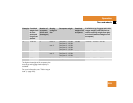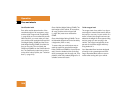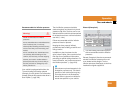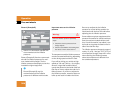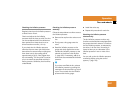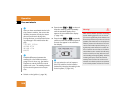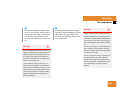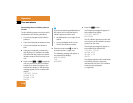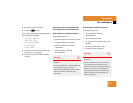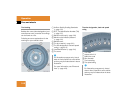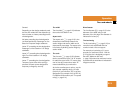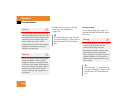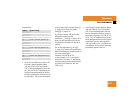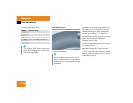
309
Operation
Tires and wheels
i
The recommended tire inflation pres-
sures for your vehicle can be found on
the tire placard located on the driver’s
door B-pillar. The tire inflation pres-
sures are not listed in the owner’s man-
ual.
Warning! G
The tire inflation pressure monitor does not
indicate a warning for wrongly selected tire
inflation pressures. Always adjust tire infla-
tion pressure according to the placard on
the driver’s door B-pillar or, if available, the
inside of the fuel filler flap.
The tire inflation pressure monitor is not
able to issue a warning due to a sudden dra-
matic loss of tire inflation pressure (e.g. tire
blowout caused by a foreign object). In this
case bring the vehicle to a halt by carefully
applying the brakes and avoiding abrupt
steering maneuvers.
i
Operating radio transmission equip-
ment (e.g. wireless headsets, two-way
radios) in or near the vehicle could
cause the tire inflation pressure moni-
tor to malfunction.
Warning! G
Follow recommend tire inflation pressures.
Do not overinflate tires. Overinflating tires
can result in sudden deflation (blowout) be-
cause they are more likely to become punc-
tured or damaged by road debris, potholes,
etc.
Do not underinflate tires. Underinflated tires
wear unevenly, adversely affect handling
and fuel economy, and are more likely to fail
from being overheated.
Do not overload the tires by exceeding the
specified load limit or vehicle capacity
weight as indicated on the placard on the
driver’s door B-pillar. Overloading the tires
can overheat them, possibly causing a
blowout.





